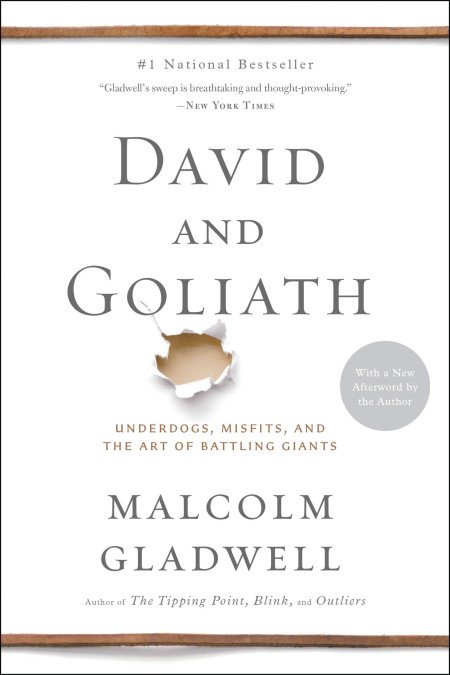
This book recounts real life stories where underdogs have had the upper hand and tries to analyze why the unexpected occurred while supporting itself on scholarly research and articles. The book is written in three parts: “Part One: The Advantages of Disadvantages (and the Disadvantages of Advantages)”, “Part Two: The Theory of Desirable Difficulty”, and “Part Three: The Limits of Power”.
What I Liked:
“David and Goliath” is captivating because it tells real life stories, and let’s face it, who doesn’t like a good underdog story. It’s easy to read and it didn’t feel like I was wasting my time. The fact that the analysis is supported by research enhances the reading experience. Overall, it showed that more often than not the playing field is more level than we think and that being the underdog has its own set of advantages. The key to success is then to fight on our own terms, where we have an advantage.
What I Didn't Like:
The book points out examples where underdogs have succeeded but most of the time it was in very specific situations which might not necessarily be replicable to your own life. So even though the book is very interesting, it remains somewhat theoretical and doesn’t really offer much constructive advice. In other words, it’s entertaining but it probably won’t do much to improve your life.
Three Takeaways:
“Suppose you were to total up all the wars over the past two hundred years that occured between very large and very small countries. Let’s say that one side has to be at least ten times larger in population and armed might than the other. How often do you think the bigger side wins? When the political scientist Ivan Arreguin-Toft did the calculations a few years ago, what he came up with was 71.5 percent. Just under a third of the time, the weaker country wins. What happens in wars between the strong and the weak when the weak side [...] fights using unconventional or guerilla tactics? The answer: in those cases, the weaker party’s winning percentage climbs from 28.5 percent to 63.6 percent.” I thought this example was particularly eye-opening. It shows you should never give up because even if the odds seems insurmountable, they might be much better than you think. It also shows that when you are the underdog, you have to be more creative and more innovative in order to make the most of the cards you were dealt. You can gain the upper hand by thinking outside of the box.
Gladwell spends a lot of time advocating for what he calls an inverted U curve when explaining diverse social phenomena, an example being the effect of class sizes on grades. Basically there’s a certain sweet spot where adding or removing a few students doesn’t really change much. That’s the top of the inverted U. Before that, adding students improves scores because it provides more interaction and afterwards adding students hinders scores because the class becomes unmanageable. All this to say, we shouldn’t jump to conclusions and we cannot always rely on our common sense. Smaller classes don’t always fair better than larger ones. Instead we must always analyze each situation and see where on the inverted U curve it falls. There are extremes where what seems like an advantage is actually a disadvantage.
Large parts of the book dealt with war and civil tension, whether Second World War London, the American South during the 60s, or Northern Ireland in the 70s. The recounting of the hardships and the horrors that were routine to so many not so long ago made me realize how fortunate I was to not have those worries. My problems in comparison are quite manageable. It just helps to put things back into perspective. #FirstWorldProblems
You Should Read This Book If:
•You like a good underdog story
•You tend to have an inferiority complex
✅ @helaryous, I gave you an upvote on your first post! Please give me a follow and I will give you a follow in return!
Please also take a moment to read this post regarding bad behavior on Steemit.
Downvoting a post can decrease pending rewards and make it less visible. Common reasons:
Submit